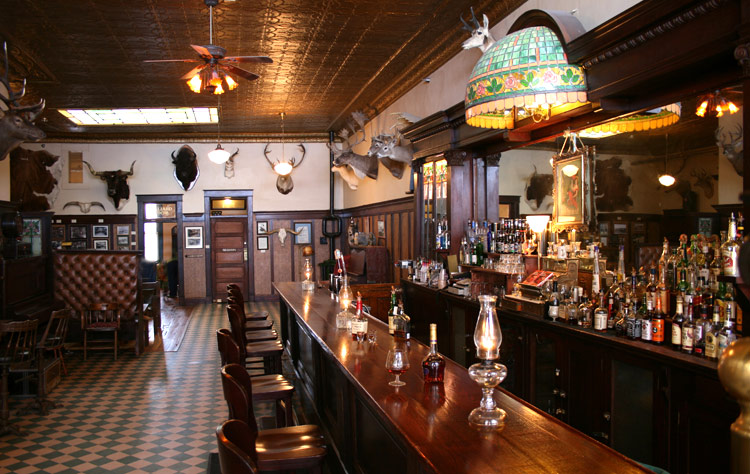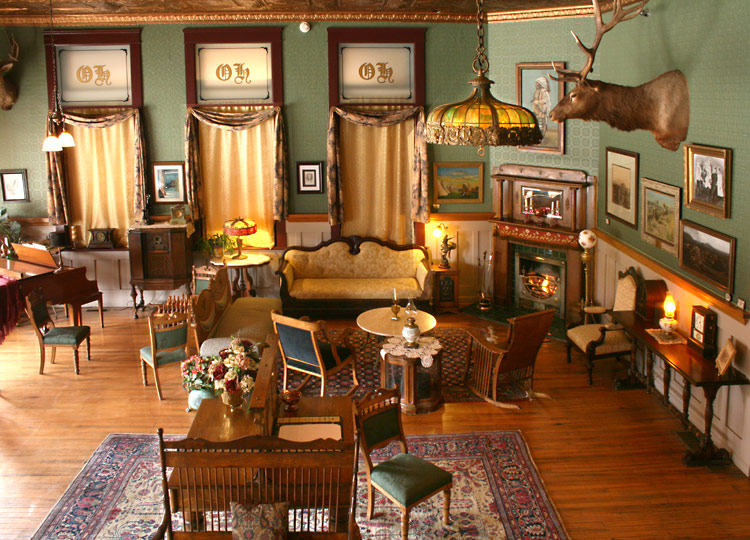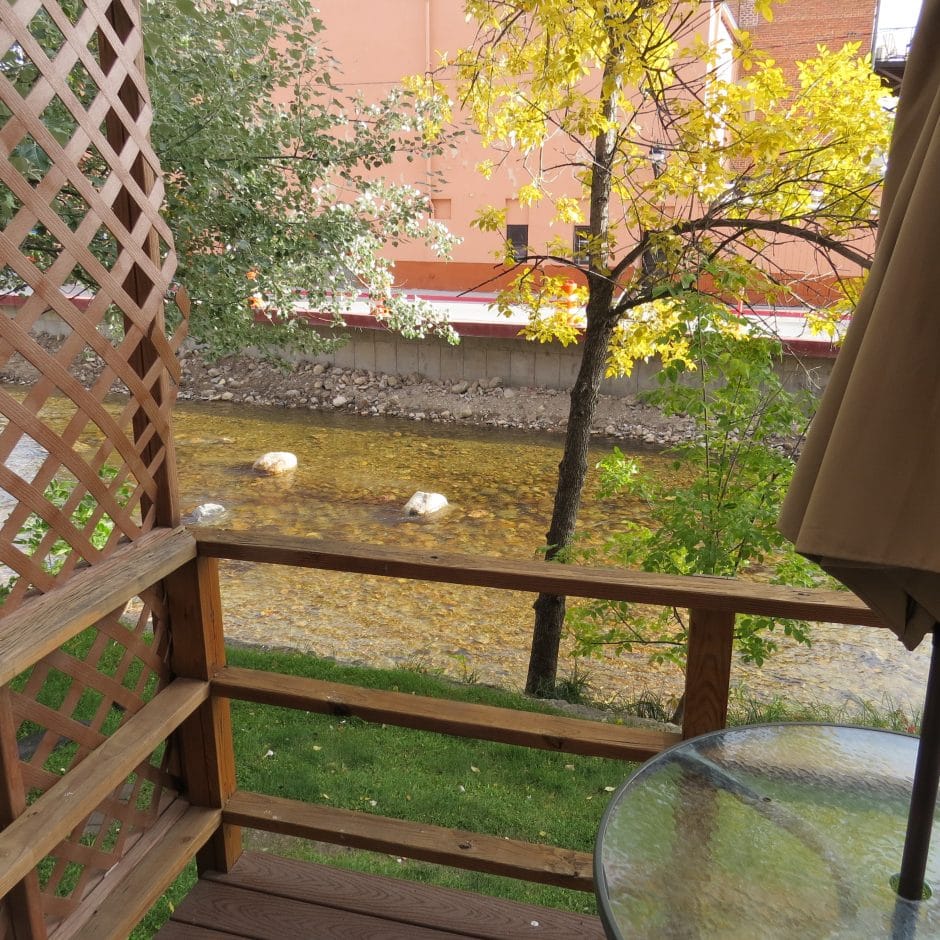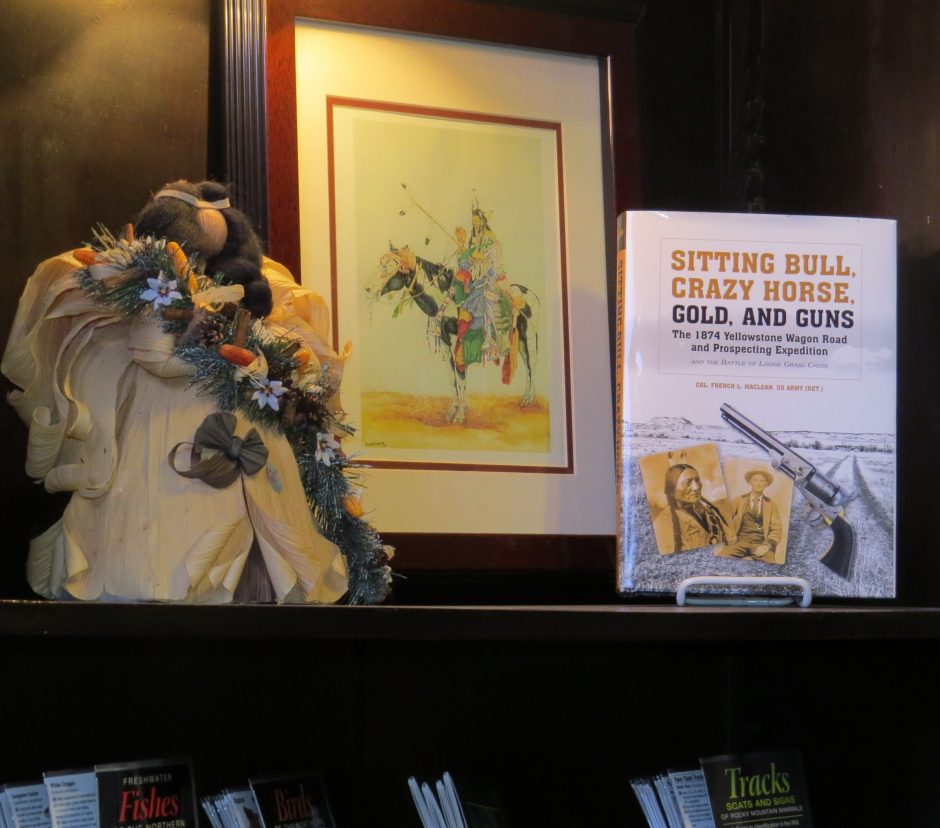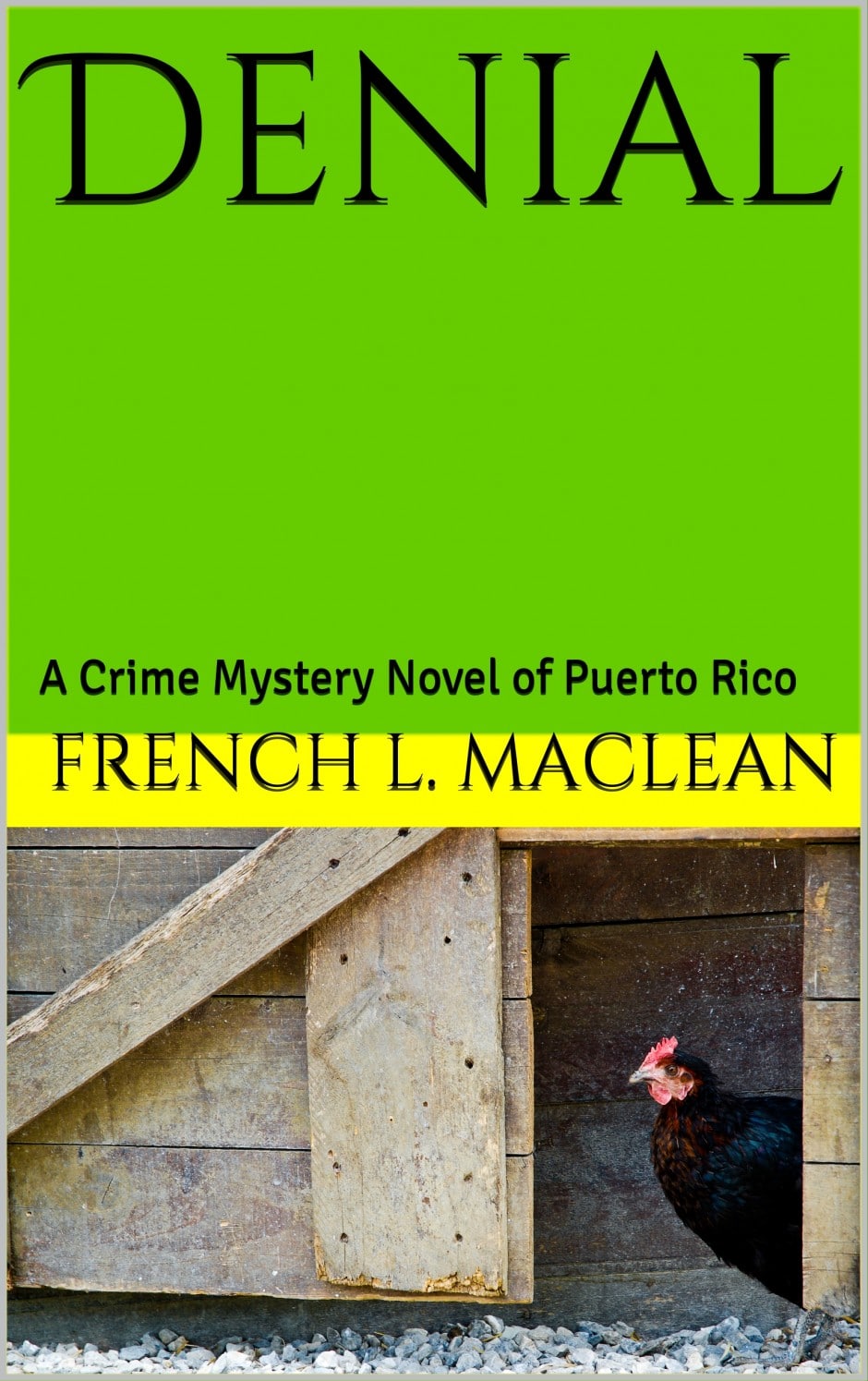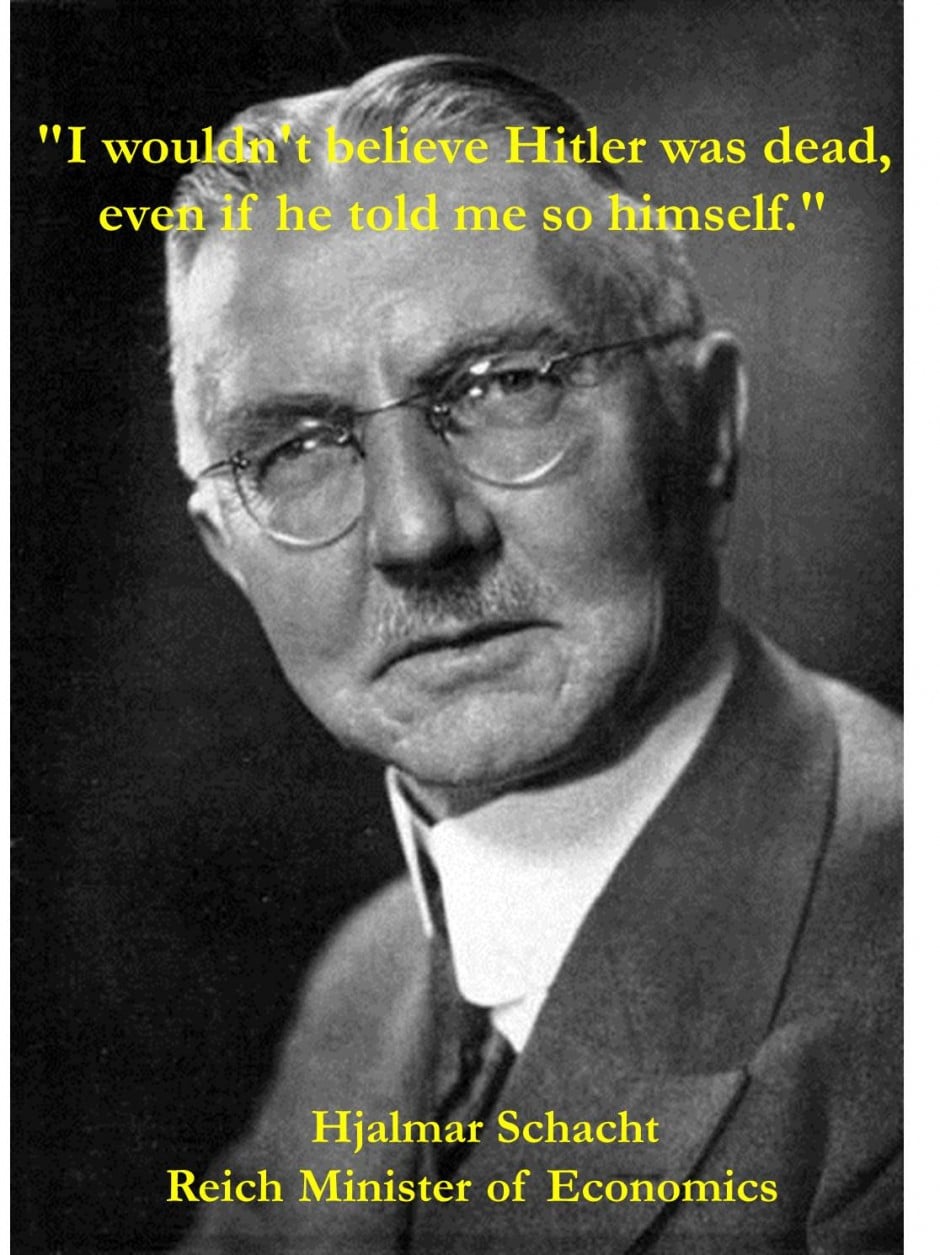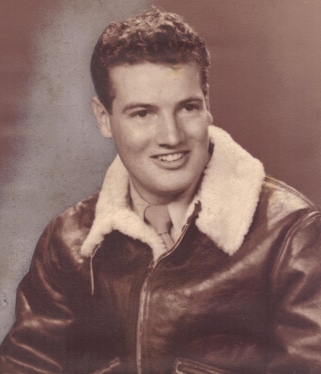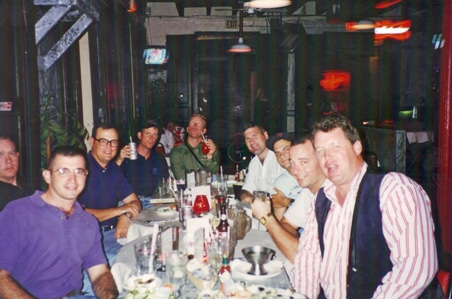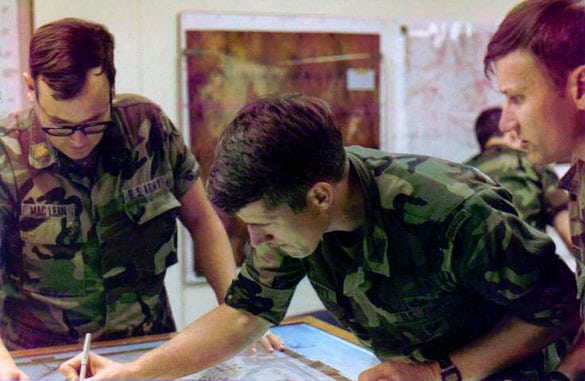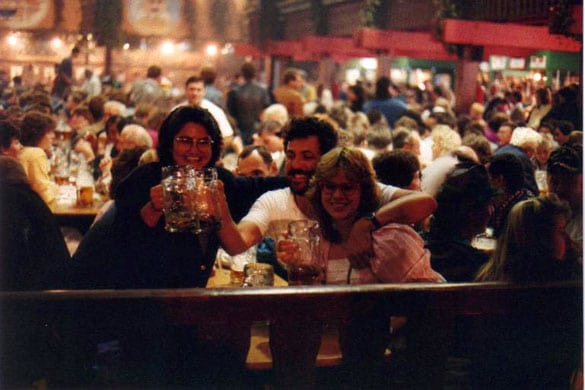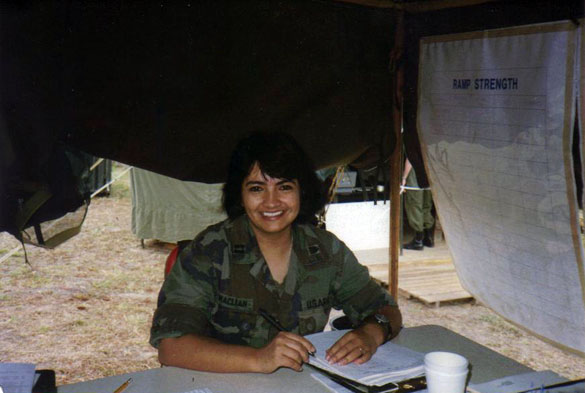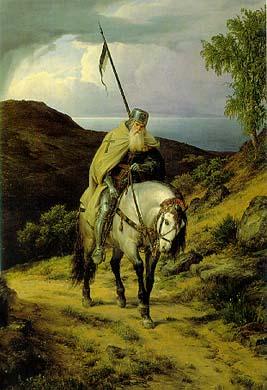
It sometimes is difficult to know where you are going if you do not know where you have been, unlike Sir William Marshal shown above. Doing even a small amount of research into your family history can be exciting, because it is often counter-intuitive. For example, you probably do not want to find that dear old grandpa was a cattle rustler back in the day. On the other hand, finding that your great-great-great-great grandfather was a rogue of some sort will probably prove fascinating. Subscribing to something like Ancestry.com can make searching a lot easier, but remember that you are always doubling your search — that is, two parents, four grandparents, eight great grandparents and so on. So if you go back twenty generations, you will be looking for over one million people for just that last generation. Obviously, you have to narrow it down. What I did was to try and find those people in the family tree who had some interesting experiences in the military of one country or another. After doing all this research, I came to the conclusion that no matter where you are from, we are very likely related to one another…one giant family. Here are some interesting folks who may be part of your family as well, if you go back far enough:
Hrolf Rollo, Robert I De Normandie, was a Viking chief born in 846 in Norway. He was with the Viking fleet that captured Normandy and besieged Paris in 885. After leaving the area, he returned in 911, recaptured Normandy and launched another attack on Paris, before laying siege to Chartres. He was defeated by Frankish forces at the Battle of Chartres on 20 July 911, but retained Normandy, after pledging feudal allegiance to King Charles. After Charles’ death, Rollo expanded his domain by seizing Le Mans and Bayeux; 30th great grandfather.
Guy Geoffrey, William VIII, Duke of Gascony, Duke of Aquitaine, was born in 1025. He was the leader of allied army that helped Ramiro I of Aragon at the Siege of Barbastro, Spain in 1064, the first campaign organized by the papacy against a Muslim city and served as a precursor of the later crusades. He died on 25 September 1086 at Chizé, Poitou-Charentes, France and is buried at the église abbatiale de Saint-Jean l’Evangéliste de Montierneuf, Poitiers, Poitou-Charentes, France; 28th great grandfather.
Henry De Ferrers, Earl of Stafford, was born in Ferrieres, Normandy, France in 1036. He distinguished himself at the Battle of Hastings, 14 October 1066, fighting with William the Conqueror. He died in 1088 at Castle Tutbury, Staffordshire, England and is buried there; 27th great grandfather.
William I, Duke of Normandy, “William the Conqueror,” conquered England in 1066 after winning the Battle of Hastings, 14 October 1066; 25th great grandfather.
Richard De Surdeval was born in 1023 and owned, the Manor of Surdeval, a village in Normandy near Mortain. He fought as a knight at the Battle of Hastings, 14 October 1066, with William the Conqueror; 25th great grandfather.
Malcolm III, King of the Scots, was born in 1031. He was killed while besieging a castle at the Battle of Alnwick on 13 November 1093 by Arkil Morel, under Robert De Mowbray, Earl of Northumbria; 25th great grandfather.
Sir Anston Luttrell fought at the Battle of Hastings, 14 October 1066, with William the Conqueror; 24th great grandfather.
Foulques (Fulk) V, “Foulques the Younger,” Comte d’ Anjou, King of Jerusalem, was born in 1092 at Anjou/Pays-de-la-Loire, France. On his initial crusade 1119-1121, he was attached to the Knights Templar. His next crusade was from 1130-1143, when he was defeated at the Battle of Barin, 1137. He died in Jerusalem on 10 November 1143 in a hunting accident after his horse fell and crushed him; he is buried at the Church of the Holy Sepulcher in Jerusalem, Knight Templar; 27th great grandfather.
Duncan MacCrinan, Duncan I, King of Scotland, killed by MacBeth at the Battle of Pitgavenny, 14 August 1040; 26th great grandfather.
Hugh Vermandois, “The Great,” Count of Vermandois, Duke of France, was born in 1057 at Vermandois, France. He was influenced to join the First Crusade after observing an eclipse of the moon on 11 February 1096. He helped capture Antioch in 1098, returned to France, but went on the minor Crusade of the Faint-Hearted in 1101. He was wounded in battle with the Turks in September 1101 and died of his wounds at Tarsus on 18 October 1101. He was buried at the St. Paul Church in Tarsus; 27th great grandfather.
William VII, Count of Poitou, Duke of Aquitaine and Gascony, was born on 22 October 1071 in Aquitaine, France. He was on the Crusade of the Faint-Hearted, where in September 1101 at Heraclea, Anatolia, Turkey, almost his entire army was destroyed by the Seljuk Turks; he reached Antioch with only a handful of men. He died on 10 February 1126 in Poitiers, France; 27th great grandfather.
Sir Nigel De Aubigny was a Norman nobleman and supporter of Henry I of England. He fought at the Battle of Tinchebray in Normandy on 28 September 1106, as part of Henry I of England’s invasion of Normandy; 25th great grandfather.
Henry I, King of England, was born about 1068, the fourth son of William the Conqueror. He fought in various battles to include the Battle of Tinchebray in 1106 and the Battle of Brémule in 1119. He died on 1 December 1135; 24th great grandfather.
Sir William Marshal, 4th Earl of Pembroke, was born in 1146 in Pembroke, Pembrokeshire, England. He went on Crusade from 1184-1187, known throughout Europe as “The Marshal” and described as the greatest knight who ever lived. He defeated over 500 knights in jousting tournaments and became the only man to defeat Richard “the Lionhearted” in such a test. He signed the Magna Carta on 15 June 1215 at Runnymede as one of the witnessing barons. He led Henry III’s forces to victory at the Second Battle of Lincoln during the First Barons’ War on 20 May 1217. He died on 14 May 1219 in Caversham Manor, Henley, in Oxfordshire, England. On his deathbed, he was admitted as a Knight Templar; he is buried at Temple Church, London, England; 25th great grandfather.
Guy II of Ponthieu was born in 1090 at Ponthieu, France. He was on the Second Crusade until he died of illness on 25 December 1147 at Ephesus, Turkey. He is buried at St. John’s Basilica in Ephesus; 23rd great grandfather.
Amadeus III, Count of Savoy and Maurienne, was born in 1092. In 1147, he accompanied his nephew Louis VII of France and his wife Eleanor of Aquitaine on the Second Crusade. Amadeus travelled south through Italy to Brindisi, where he crossed over to Durazzo, and marched east along the Via Egnatia to meet Louis at Constantinople in late 1147. After entering Anatolia, Amadeus, who was leading the vanguard, became separated from Louis, near Laodicea, and Louis’ forces were almost entirely destroyed. Marching on to Adalia, Louis, Amadeus, and other barons decided to continue to Antioch by ship. On the journey, Amadeus fell ill on Cyprus, and died at Nicosia in April 1148. He was buried in the Church of St. Croix in Nicosia; 24th great grandfather.
Sir Henry De Essex, Constable of England, was born in 1121. During the campaign in Wales during the Welsh Wars in 1157, he dropped the royal standard of Henry II. He was later accused of treason and fought a trial by battle on Fry Island, where he was defeated by Robert De Montfort. He survived, but as a convicted traitor, his estates and offices were forfeit and his family disgraced, so he took the Benedictine cowl; 24th great grandfather.
Sir Roger De Mowbray, Lord of Montbray, was born in 1122. He fought at the Battle of the Standard on 22 August 1138 against the Scots at Cowton Moor, Northallerton in Yorkshire. In 1141, he was captured with King Stephan at the Battle of Lincoln in the civil war in England. In 1147, he accompanied Louis VII of France and his wife Eleanor of Aquitaine on the Second Crusade, gaining acclaim by defeating a Muslim leader in single combat. He participated in the Revolt of 1173 against Henry II, but was defeated at Kinardferry, Kirkby Malzeard and Thirsk. He went on Crusade again in 1177 and again in 1185. He fought and was captured on 4 July 1187, again on Crusade, at the Battle of Hattin in the Holy Land by the Muslim armies under Saladin. The Knights Templar ransomed him several months later, but he died shortly afterward. The account of Roger’s military service was first described in a sixteenth-century narrative from Newburgh Priory, tells of adventure, fantasy and daring. According to this version of events, Roger wrestled with a dragon and encountered a lion, which he brought back with him to his castle at Hood, in Yorkshire. His exploits are remarkably similar to those of the Arthurian hero and Knight of the Round Table, Yvain, in Chrétien de Troyes’ twelfth-century romance, The knight and the lion; 24th great grandfather.
Frederick I “Barbarossa,” Duke of Swabia, King of Germany, King of Italy, King of Burgundy, Holy Roman Emperor, was born in 1122. He was on the Second Crusade 1148, launched six military campaigns into Italy and led the Third Crusade in 1189, before he drowned in the Saleph River (now the Göksu River) in southern Turkey on 10 June 1190, 24th great grandfather.
Sir William De Ferrers, Earl of Derby, was born 1140 at Staffordshire, England. He was a compatriot of Richard the Lionhearted; he was on the Third Crusade until he died on 21 October 1190 at the Siege of Acre. He was a Knight Templar; 24th great grandfather.
Sir Thomas Salisbury, Knight of the Holy Sepulcher, was born 1160 at Denbighshire, Wales. He was on the Third Crusade, 1189-1192 and fought at the Siege of Acre in 1191; 24th great grandfather.
Sir Henry Salisbury was known as “The Black Knight” for his prowess against the Saracens on the Third Crusade; 23rd great grandfather.
Sir Nigel De Mowbray was born in 1145 at Axholme Castle in Lincolnshire, England. He was on the Third Crusade and was killed at the Siege of Acre in 1191; 23rd great grandfather.
Jean I of Ponthieu was born in 1135 at Montreuil-sur-Mer, Flanders, France, he was on the Third Crusade until he died on 30 June 1191 at the Siege of Acre, Holy Land; 22nd great grandfather.
Henry De Bohun, 1st Earl of Hereford and Essex, Constable of England, Sheriff of Kent was born in 1176. He signed the Magna Carta on 15 June 1215 at Runnymede as one of the witnessing barons. He served with King Louis VIII of France’s forces at the Second Battle of Lincoln during the First Barons’ War on 20 May 1217 and was captured. He was on the Fifth Crusade, 1219-1220, but died on 1 June 1220 in Egypt enroute to the Holy Land. He is buried Llanthony Priory, Gloucester, England; 23rd great grandfather.
Sir Robert De Vere, Master Chamberlain of England, 3rd Earl of Oxford, was born in 1164. He signed the Magna Carta on 15 June 1215 at Runnymede as one of the witnessing barons. He died in 1221; 22nd great grandfather.
Sir William De Mowbray, Lord of Axholme Castle, was born in 1173. He signed the Magna Carta on 15 June 1215 at Runnymede as one of the witnessing barons. He died in 1222; 22nd great grandfather.
Malise mac Gilleain, 2nd Chief Clan MacLean, fought at the Battle of Largs against the Vikings on 2 October 1263; 22nd great grandfather.
Sir William De Fiennes, Sheriff of Somerset, Lord of Wendover, was born at Aylesbury Vale, Buckinghamshire, England. He was on Crusade in 1240-1241, before he died in April 1241 at Acre, Holy Land; 22nd great grandfather.
Sir Humphrey De Bohun V, “The Good”, 2nd Earl of Hereford and Essex, Constable of England, godfather of Prince Edward, later to be Edward I of England, was born 1208 in Hungerford, Essex, England. He was on the Seventh Crusade, 1250-1252. He died 24 September 1275 in Llanthony, Gloucester, England and is buried at Llanthony Priory; 22nd great grandfather.
Robert I, “The Good”, Count of Artois, Prince of France, was born on 25 September 1216. He was on the Seventh Crusade before he was killed while leading a group of Knights Templar at the Battle of Al Mansurah, Egypt on 8 February 1250; 21st great grandfather.
Sir Hugh Le Despencer, 1st Baron le Despencer, Justiciar of England, Constable of the Tower of London, was born at Loughborough, Leicestershire, England on 5 August 1223. He was killed by Sir Roger Mortimer at the Battle of Evesham on 4 August 1265 during the Second Barons’ War, while fighting on the side of Simon Montfort and the rebellious barons; 20th great grandfather.
Malcolm Gillie Coluim MacLean, 3rd Chief of Clan MacLean, helped defeat Edward II of England at the Battle of Bannockburn in the First War of Scottish Independence, 24 June 1314; 21st great grandfather.
Sir Alexander Luttrell was born in 1236 at East Quantoxhead, Somerset, England. He was on the Eighth Crusade, 1270-1273, until he was killed at Acre, Holy Land on 3 May 1273. He is buried at West Quantoxhead; 22nd great grandfather.
Sir John Salisbury of Lleweny, born 1240 in Lleweny, Denbighshire, Wales, on Eighth Crusade, 1271-1272, died on March 7, 1288, unknown burial; 22nd great grandfather.
Edmund “Crouchback” Plantagenet, Prince of England on Eighth Crusade, born 1271, killed at the Siege of Bayonne, France for his brother, King Edward I, on 5 June 1296, interred at Westminster Abbey; 20th great grandfather.
Sir Robert De Brus, 6th Lord of Annandale, was born in 1243. He fought in the Second Barons’ War, Welsh Wars, and First War of Scottish Independence, including the Battle of Dunbar Castle on 28 April 1296, as a supporter of King Edward I; 20th great grandfather.
Sir Robert De Tibetot, Constable of Porchester Castle, born 1228 in Melton Mowbray, Leicestershire, England, on Eighth Crusade, 1270, died 22 May 1298 in Nettlestead, Suffolk, England; 19th great grandfather.
Sir John De Mowbray; 2nd Baron Mowbray, born 4 September 1286 in Lincolnshire; fought and captured at the Battle of Boroughbridge, 16 March 1322, as part of rebellious barons under Lord Thomas the Earl of Lancaster, against King Edward II; hanged at Yorkshire on 23 March 1322; 19th great grandfather.
Sir Humphrey De Bohun, Earl of Hereford Essex, killed at the Battle of Boroughbridge, 16 March 1322, as part of rebellious barons under Lord Thomas the Earl of Lancaster, against King Edward II; 18th great grandfather.
Hector Ruadh MacLean, 6th Chief Clan MacLean, killed at the Battle of Harlaw, “Red Harlaw,” 24 July 1411; 18th great grandfather.
Sir John De Vere, Earl of Oxford, fought at the victories at the Battle of Crecy, 26 August 1346 and the Battle of Poitiers, 19 September 1356 against the French. Died on 23 January 1359 at the Siege of Rheims during the Hundred Years’ War; 18th great grandfather.
Sir Ralph De Shelton, 14th Lord of Shelton, was born in 1315 and fought during the Hundred Years’ War. At the Battle of Crecy, 26 August 1346, he served in King Edward III’s company and was knighted for saving the life of the king’s son, Prince Edward III of Wales, “The Black Prince.” At the Battle of Poitiers, 19 September 1356, he captured French nobleman John Recourt; 18th great grandfather.
Lachlan Bronnach MacLean, 7th Chief of Clan MacLean, captured at the Battle of Harlaw, “Red Harlaw,” 24 July 1411; 17th great grandfather.
Sir John Hawkwood, Condottieri, fought during the Hundred Years’ War at the victories at the Battle of Crecy, 26 August 1346 and the Battle of Poitiers, 19 September 1356 against the French. He commanded the White Company of mercenaries in France and Italy, and was commander-in-chief of the army of Florence in the war against Milan in 1390; 17thgreat grandfather.
Sir John Tyrell fought in the retinue of Sir Walter Hungerford in the victory at the Battle of Agincourt against the French on 25 October 1415 during the Hundred Years’ War; 15th great grandfather.
Hector Odhar MacLean, 9th Chief Clan MacLean, killed at the Battle of Flodden Field, 9 September 1513; 15th great grandfather.
Rueben Lisenby, private, served in Captain Samuel Martin’s Troop of Lieutenant Colonel William Polk’s Regiment of Light Dragoons, in Colonel Thomas Sumter’s South Carolina First Brigade of Militia against the British in South Carolina during the American Revolutionary War, 5th great grandfather.
Johannes Heinrich Jobst served in the 2nd Hessian Hussar Regiment (14th Prussian Hussar Regiment) in Frederick The Great’s Army, 1780-1792, 4th great grandfather.
Myron D. MacLean, corporal, fought in the Battle of the Bulge and the Hürtgen Forest in the 9th Infantry Division, where he was wounded and taken prisoner, 1944-45, father. He later received a Silver Star for this action.
From this list, it appears that the family “grandfathers” didn’t always win, but they weren’t afraid of a fight either if they believed in a cause…not bad, not bad at all!
